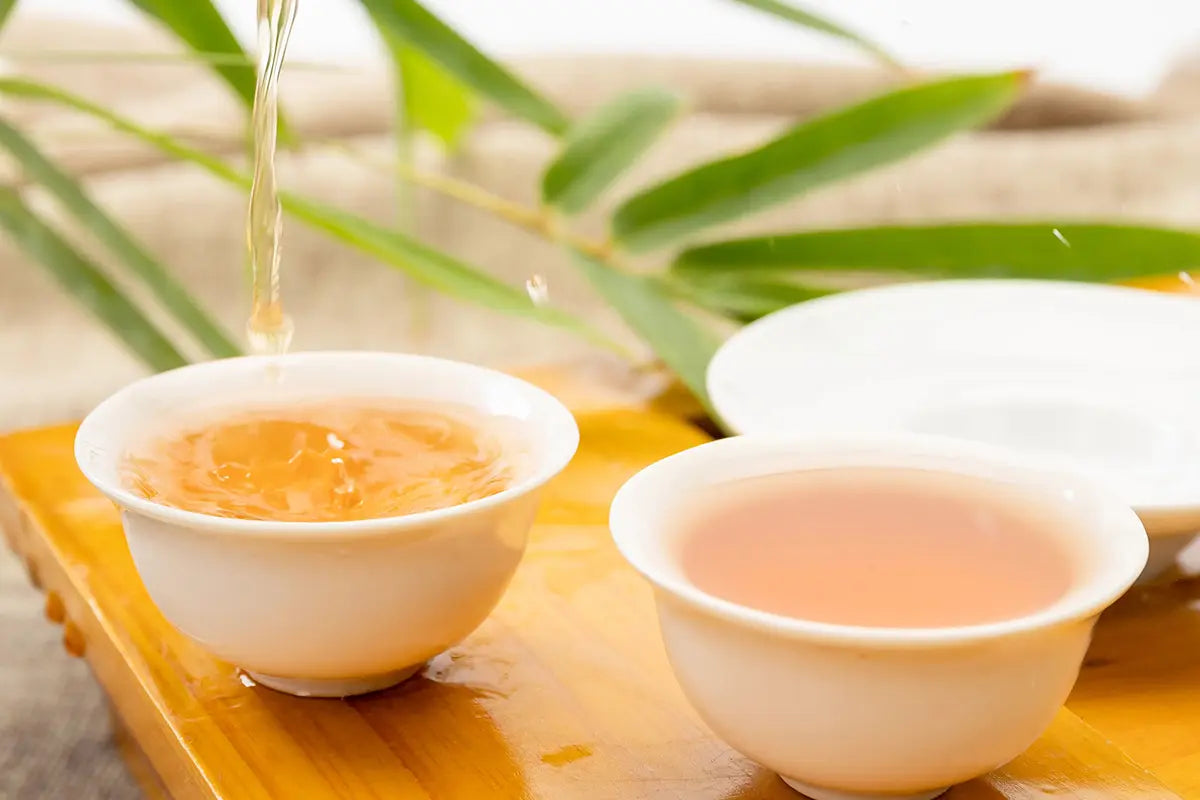Ключевые моменты, которые сделают вкус чая улун лучше!

- Нужен хороший чай, хорошая вода и хорошая чайная посуда.
«Вода — мать чая, а сосуд — отец чая». Помимо хорошего китайского чая , также важны хорошая вода и чайная посуда. Только так можно в полной мере выразить очарование листового чая Улун.
Лучше всего использовать очищенную или минеральную воду, а если ее нет, можно использовать фильтрованную водопроводную воду.
Из чайной посуды предпочтение отдается «исинской керамике» (керамике из Исина и фарфору из Цзиндэчжэня).
- Обратите внимание на форму чайника и количество заварки.
Выберите форму чайника и его емкость в соответствии с количеством людей, пьющих чай, чтобы определить количество используемого листового чая Улун. Существует много видов листового чая Улун, поэтому рекомендуется открыть для себя лучший листовой чай с помощью пробника листового чая .
Если листовой улун относительно рыхлый, например, Фэнхуан Даньцун , то количество чая должно заполнять примерно половину чайника.
Если чайные листья плотно скручены в полушарики, то их количество должно заполнять примерно треть или четверть объема чайника.
- Требования к температуре воды
Из-за наличия в листовом чае улун некоторых особых ароматических веществ, для их полного раскрытия необходимы высокие температуры. Поэтому для заваривания необходимо использовать горячую воду (95-100 градусов по Цельсию).
Однако не все листовые чаи с явными ароматами требуют заваривания при высокой температуре. Некоторые листовые цветочные чаи, такие как китайский жасминовый чай , больше подходят для заваривания при немного более мягкой температуре воды.
- Время заваривания
Листовой чай Улун не следует заваривать слишком долго; обычно достаточно заваривания в течение десяти секунд. После трех-четырех завариваний время заваривания можно немного увеличить.
- Количество заварок
Для большинства видов листового чая большинство веществ из чайных листьев извлекаются при первой заварке. К третьей заварке большинство веществ, как правило, полностью извлекаются, поэтому чайные листья обычно меняют после трех заварок.
Однако листовой чай Улун, особенно чай с высокой прочностью, такой как ТеГуаньинь , можно заваривать 4-5 раз. Высококачественные сорта можно заваривать более шести раз. Поэтому существует поговорка, что листовой чай Улун имеет «более семи завариваний с длительным ароматом».
Найдите больше листового чая улун с помощью нашего пробника чая улун.>>>
На что следует обращать внимание при употреблении чая улун?

Избегайте употребления листового чая Улун натощак:
Поскольку листовой чай улун содержит определенное количество кофеина и теина, его употребление натощак может сильно стимулировать пищеварительный тракт, что приводит к таким симптомам, как боль в животе, потеря аппетита, тошнота и рвота.
Не рекомендуется пить холодный чай Улун:
Теплый чай Улун может заставить вас почувствовать себя свежим и бодрым. Холодный чай Улун может вызвать побочные эффекты, такие как холодная сырость и повышенное количество мокроты.
Избегайте слишком долгого заваривания листового чая Улун:
Время заваривания листового чая улун имеет решающее значение. Если заваривать слишком долго, полифенолы чая, липиды, ароматические компоненты и т. д. в чайных листьях автоматически окисляются, что снижает их вкусовые качества. Окислительно-восстановительные процессы витамина С, витамина Р и аминокислот в чайных листьях значительно снижают пищевую ценность чайного настоя.
Какую пользу для здоровья приносит чай улун?

Листовой чай Улун не только имеет восхитительный вкус, но и предлагает множество превосходных преимуществ для здоровья. Поэтому листовой чай Улун может быть очень полезным набором для подарка семье и друзьям.
- Умственная активность и освежающий эффект
Кофеин в листовом чае Улун стимулирует центральную нервную систему, усиливает процесс возбуждения коры головного мозга, оказывает освежающее действие на разум и очищает сердце.
- Мочегонное и снимающее усталость действие
Кофеин в листовом чае Улун может стимулировать почки, способствовать быстрому выделению мочи, увеличивать скорость фильтрации почек и сокращать время задержки вредных веществ в почках. Кофеин также может устранять избыток молочной кислоты в моче, помогая организму как можно быстрее избавиться от усталости.
- Замедление старения
Листовой чай улун содержит высокий уровень полифенолов чая. Полифенолы чая обладают сильной антиоксидантной и физиологической активностью, выступая в качестве поглотителей свободных радикалов в организме человека. Исследования, проведенные соответствующими органами, показали, что эффективность 1 миллиграмма полифенолов чая в устранении избыточных свободных радикалов, вредных для организма человека, эквивалентна 9 микрограммам супероксиддисмутазы (СОД), что значительно выше, чем у других подобных веществ. Таким образом, чай улун обладает хорошим антиоксидантным эффектом и может помочь замедлить старение.
- Ингибирование сердечно-сосудистых заболеваний
Полифенолы чая в листовом чае Улун играют важную роль в жировом обмене человека. Высокий уровень холестерина и триглицеридов в организме приводит к отложению жира на стенках кровеносных сосудов, пролиферации гладкомышечных клеток сосудов и образованию атеросклеротических бляшек, что приводит к сердечно-сосудистым заболеваниям.
Полифенолы чая, особенно катехины, такие как ЭКГ и ЭГК, и продукты их окисления теафлавины, помогают подавлять образование этих пролиферативных бляшек, снижают повышение уровня фибриногена, который повышает свертываемость крови, и оказывают антитромботическое действие, тем самым подавляя атеросклероз.
Листовой чай Улун не только полезен, но и вкусен. Дегустация чая Улун требует спокойного ума, медленного смакования каждого глотка. Такой способ питья позволяет лучше оценить уникальные характеристики, привносимые различными вкусами и ароматами чая Улун.
Благодаря тщательной дегустации можно различить живость, сладость, очарование и аромат в каждой заварке чая Улун , что также является большим удовольствием.












































































